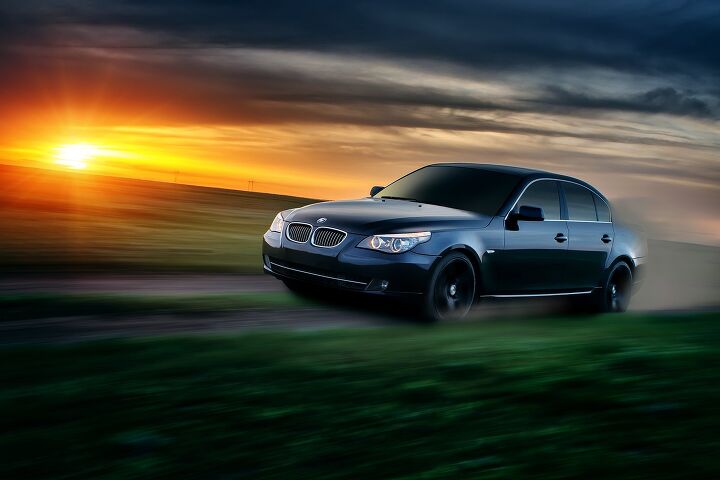QOTD: How Do You Measure Fast?

Did you notice that TTAC was short one article by yours truly this week? Probably not — but if you did, allow me to explain the reason. I’ve spent the entire week doing testing for Road & Track’s Performance Car Of The Year issue. Today, I drove 10 mostly brilliant and remarkably capable vehicles against the clock around the NCM West course, ranging from a Honda Civic Type R to a Lamborghini Huracan Performante and a McLaren 720S.
I think that a lap around NCM West is a good indicator of a car’s speed, insofar as it includes everything from a straight-line drag race to some unpleasant off-camber turns that can send a car sideways at freeway speeds or well above. If you asked me how fast a car was, I would suggest you let me drive it around NCM West — only then would I be able to tell you.
Since doing that is expensive and often impractical, most people measure automotive speed the old-fashioned way: they read Car and Driver. But that still doesn’t settle the issue: what is the proper yardstick of automotive pace?
I don’t think 0-60 means anything in the context of modern automobiles. Most freeways in this country nowadays run at 75-90 when the road ahead is clear of traffic and law enforcement. Which suggests that the quarter-mile is a better measurement — but that time can be heavily affected by traction off the line.
After some thought, I’ve come to believe that trap speed at the end of the quarter is all that really matters for street-driven cars. It’s rare for me to exceed 110 mph on the street nowadays, because I’m a sad old man who wants to watch his son graduate from high school. If you can tell me how quickly a car gets to 120 mph or so, that’s all I want to know. Since quarter-mile trap speed is more widely reported than 0-120 times, that’s good enough for me.
What about you? Do you use 0-60 times to bench race? Quarter-miles? Corrected or uncorrected? Do you trust your local dragstrip more than the math-adjusted results at the major magazines? Or are you patiently waiting for me to tell you how the new six-speed Porsche GT3 handles that long front straight at NCM?
[Image: Ivan Kurmyshov/ Bigstock]

More by Jack Baruth
Latest Car Reviews
Read moreLatest Product Reviews
Read moreRecent Comments
- Doug brockman There will be many many people living in apartments without dedicated charging facilities in future who will need personal vehicles to get to work and school and for whom mass transit will be an annoying inconvenience
- Jeff Self driving cars are not ready for prime time.
- Lichtronamo Watch as the non-us based automakers shift more production to Mexico in the future.
- 28-Cars-Later " Electrek recently dug around in Tesla’s online parts catalog and found that the windshield costs a whopping $1,900 to replace.To be fair, that’s around what a Mercedes S-Class or Rivian windshield costs, but the Tesla’s glass is unique because of its shape. It’s also worth noting that most insurance plans have glass replacement options that can make the repair a low- or zero-cost issue. "Now I understand why my insurance is so high despite no claims for years and about 7,500 annual miles between three cars.
- AMcA My theory is that that when the Big 3 gave away the store to the UAW in the last contract, there was a side deal in which the UAW promised to go after the non-organized transplant plants. Even the UAW understands that if the wage differential gets too high it's gonna kill the golden goose.


































Comments
Join the conversation
To me....quick means real-world quick. Like Jack, my supra-100 MPH days are behind me....but I need the ability to zip from 30 to 75 to pass the occasional tractor or preacher's wife on our Indiana two-laners and county roads, and get the pass done before I hit the oncoming combine or school bus. My C300 Benz has the gumption and then some to do that in spades, thankfully. "Seems" quicker in that test than either of my 5.0 Mustangs I had previously. But maybe that's just because my Benz handles such tasks with the droll aplomb of a jaded RAF pilot during the blitz. It's quick without seeming to hurry....we've revved nearly to redline a tick after planting my right foot...by comparison, my Mustangs felt like they were in a panic.
0-60 or 1/4 mile TIMES are a measure of how quick a car is. The trap speed is a decent indicator of "fast" but how well a car can negotiate a track is a better indicator of how fast it is overall. If you want to be able to merge easily you need a quick car. It doesn't matter if the top speed is 110mph or 210mph, just that it gets to freeway speeds in a reasonably short time. If you want to run on the autobahn you need a relatively fast car. You don't want a car that goes 0-60 in 4 seconds flat but tops out at 85mph. JMHO anyway the different between fast and quick. Since it was asked.